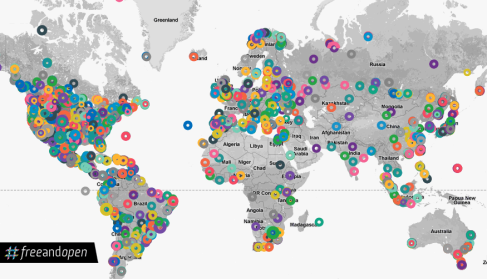Famous Unethical Psychological Experiments + Manifesto
March 7, 2013 Leave a comment
What is psychology? It is the scientific study of the human mind and its functions, especially those affecting behavior in a given context.
Why psychology? My passion for this subject area has grown after taking classes Sundays and Mondays outside of school. Attending these classes has helped me further grow my knowledge and learn about what my passions are.
What I find really fascinating about psychology are the experiments that have been banned from previous years. There are some interesting experiments that I have listed, all which are banned from being replication; therefore, most of current day psychology doesn’t involve some of the sketchy behavior outlined in my selection.
#10: Monster Study – 1939 (Wendell Johnson)
This psychological experiment was set up as one of ‘talking.’ Orphans were split up and treated differently. One of the groups received positive recognition for their speech, praising them every so often, while the other group received negative output for their speech, despite their decent communication skills. This experiment was nicknamed the Monster Study because Johnson’s peers were sickened that he would experiment on orphans to test his theories. This study was hidden in World War II because of the onset of Nazi Germany. We learned from this study that instructors hold a massive amount of power on students’ self-confidence.
#9: The Aversion Project – 1970s (South African Apartheid Army)
The quick synopsis of this experiment is that the Apartheid Army of South Africa forced lesbian and homosexual soldiers to undergo sex changes and unethical torture. There was an estimated 900 people who changed genders as a fact of the Apartheid Army to weed out homosexuality from within the forces in a secretive fashion. This was done in Ward 22 of 1 Military Hospital at a city near Pretoria. Most of the victims were 16-24 year old men drafted into the army. There were negative consequences to the actions put forward by the SAAF, and their actions can never be erased.
#8: Stanford Prison Experiment – 1971 (Philip Zimbardo)
This study is my favorite psychological experiment of all time. It is about how humans forget about their real lives when they’re placed in a roleplaying scenario. It is very frightening, considering that the people who took part in this experiment were university students at Stanford University in the basement of a student building.
The setup of the experiment was this:
Two groups of students were randomly assigned to be either guards, or prisoners. These individuals were university students and they were asked to simulate the scenario, however, they weren’t expecting anything horrendously bad. They suffered most of the detrimental effects of the study by the 2nd day, where a rebellion was lead by the prisoners. The guards then implemented a system to stop solidarity between prisoners. Jail keepers were constantly paranoid about the motives of the imprisoned. The prisoners were starting to feel the effects of this system, experiencing emotional disturbances, depression and learned helplessness. These individuals also associated themselves with numbers, rather than their own names! They completely assimilated into their roles, and were confused when asked how they planned to leave the prison.
Dr. Zimbardo ended the experiment after five days, realizing the horrendous effects of it. We have since learned how quickly people can abuse their control when they’re put into the right circumstances. A real life example is Abu Ghraib, where US Navy Seals, and recruits abused their prisoners of wars, committing atrocities.
#7: Monkey Drug Trials – 1969 (Deneau et. al)
This demonstration explains why humans no longer use monkeys in our psychological experiments, as our ethics code has changed. In this set of experiments, monkeys and rats were trained to inject themselves with an assortment of drugs including morphine, alcohol, cocaine, codeine, and amphetamines. Once these animals knew how to self-inject, they were left with a large amount of each drug.
These animals lost their minds, and some even lost parts of their bodies. They tried to escape from their spaces, breaking their arms while attempting to do so. Some monkeys tore off parts of their fingers and toes as a consequence of hallucinations of taking cocaine. There were other special cases where monkeys tore off fur from their arms and stomach. If various drugs were combined, death would occur in the near future.
The final outcome of experiments were no surprise, but was it really necessary to inhumanely treat animals in such a manner? We can already observe such behavior in slummy areas.
#6: Landis Facial Expressions Experiments – 1924 (Carney Landis)
Carney Landis, a psychology graduate at the University of Minnesota created an experiment to find out whether different emotions created facial expressions specific to that emotion. There was a twist, however. The students were commanded to complete offensive tasks. These errands included: smelling ammonia, watching explicit videos, and putting their hands into a bucket of frogs.
There’s an even worse part to this experiment. Participants were given a live rat and were told to kill it. All the students were disturbed by the idea, but a solid ⅓ had completed the task. Many of the mice were killed in an inhumane manner and experienced great suffering. For those who didn’t perform this operation, Landis would kill the animal himself in front of the participant.
This study tells us that people are willing to do almost anything when asked for in a situation. Also, we learned from the results that humans don’t share a common set of unique facial expressions.
#5: Little Albert – 1920 (John Watson)
John Watson was a psychologist who loved using orphans in his experiments. He wanted to test whether fear was innate or conditioned, a theory of behaviorism, which he coined. Watson used a nine-month old as a test subject, which he named Little Albert. He placed Albert in a hospital, where he exposed him to a rabbit, rat, monkey, various masks, wool, burning newspapers, and other items for two months without any conditioning. Conditioning is when a stimulus becomes more and more constant and frequent in a given environment.
Albert was placed on a mattress in the centre of the room. A white lab rat was also place alongside him. At first, he wasn’t afraid of the rat at all. Now, Watson would make a loud noise behind Albert’s back by striking a metal object with a hammer whenever Albert made contact with the rat. After this had been completed several times, Albert associated the white rat with the loud noise, and was now afraid of white, furry objects. Unfortunately, Albert was never desensitized to his fear, and lived with it for the rest of his life.
#4: Learned Helplessness – 1965 (Seligman and Maier)
Seligman and Maier had three groups of dogs that were fastened by harnesses. Group One dogs were released after a short amount of time with no harm done. This was the control group. Group Two dogs were paired up and leashed together, while one from each pair of dogs were given electric shocks, which could be prevented by pressing a lever. Group Three dogs were also paired up and leashed together, one of whom received shocks, but these shocks never ended, even when the lever was pressed. The shocks came randomly and were ‘inevitable,’ which gave the dogs the concept of ‘learned helplessness,’ where they assumed that nothing could be done about the shocks. Group Three dogs had symptoms of clinical depression at the end. Later on, for additional testing, group three dogs were placed in a box by themselves. These animals were shocked but could avoid it by jumping out of the box. They simply gave up, having displayed the concept of learned helplessness.
#3: Milgram Study – 1974 (Stanley Milgram)
I find that this study is extremely fascinating because of its setup. This psychologist, Stanley Milgram, at Yale University wanted to test subjects’ yielding to authority. This test was set up so that participants were teachers, and the learner was an actor. Both the teacher and learner are then told that the study was about memory and learning, when it was truly about administering shocks of increasing intensity to the student, when the student actually wasn’t getting hurt at all! The shrieks and shouts were pre-recorded. After a certain number of shocks, there was no sound emerging from the room, giving the impression that they had died.
Milgram wanted to know whether individuals are capable of harming a stranger, and he got a pretty definitive answer. The vast majority of his test subjects would use the maximum voltage on the student.
#2: The Well of Despair – 1960 (Harry Harlow)
Harlow is notoriously known for his rhesus monkey experiments concerning social isolation. He placed infant monkeys which had bonded with their mothers into devices with no contact with their mothers for periods of up to one year. The majority of these monkeys never recovered. He concluded from his trials that even a normal childhood can still result in depression later on in life. The animal liberation movement was started shortly after Harlow’s experiments as a direct result. He had no respect for animals, or humans in fact, leaving his legacy in psychology books.
#1: David Reimer – (Dr. Money) 1956-2004
This study is extremely disturbing. Dr. Money circumcised an 8-month old boy. While in the procedure, Dr. Money burned off the ‘subject’s’ entire male genitalia. The doctor had intentionally used the wrong tool for this outcome. After this fact, the doctor made up an intricate excuse to lie about the procedure, and suggestion his ‘best’ solution. A sex change. His parents were originally very opposed to the idea but they accepted it later on. The story behind Dr. Money was that he wanted to say that nurture, not nature determined gender identity.
Dr. Money then constructed female genatalia into the subject, who was now Brenda. (This is a frightening thought). Dr. Money then reported this experiment as a success, even though there were many negative effects listed by Brenda. Brenda acted much like a regular boy, and had conflicted feelings about life. Worst of all, she was never informed of the sex change. Her mother was suicidal, her father was an alcoholic, and her brother was severely depressed. She was finally told that she was born a male at age 14! Brenda then stopped taking hormonal supplements, and committed suicide at age 38.
This is a tragic end to a depressing case.
What do we learn from these studies? Well, despite what we think, we may be badly attributing students with characteristics in the high school system.
I am currently in the process of producing a Manifesto about my program at school (Hamber Challenge/Academy), where I will vent my thoughts and write my aspirations about the future.



